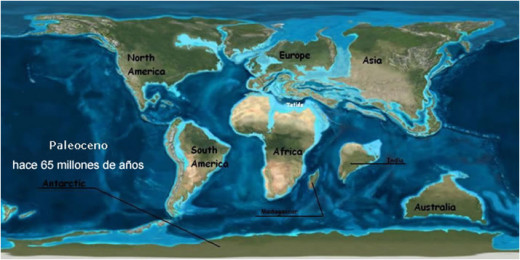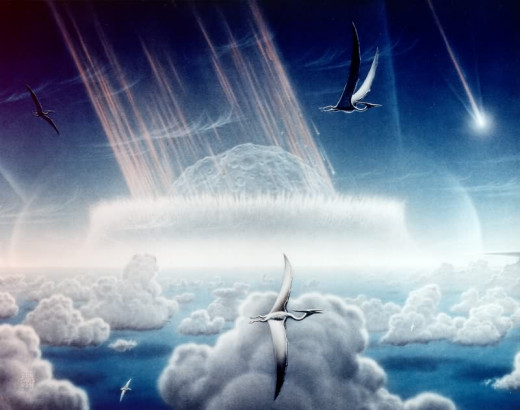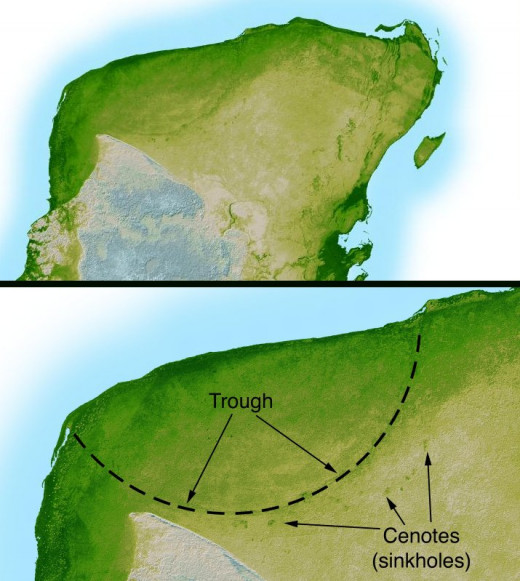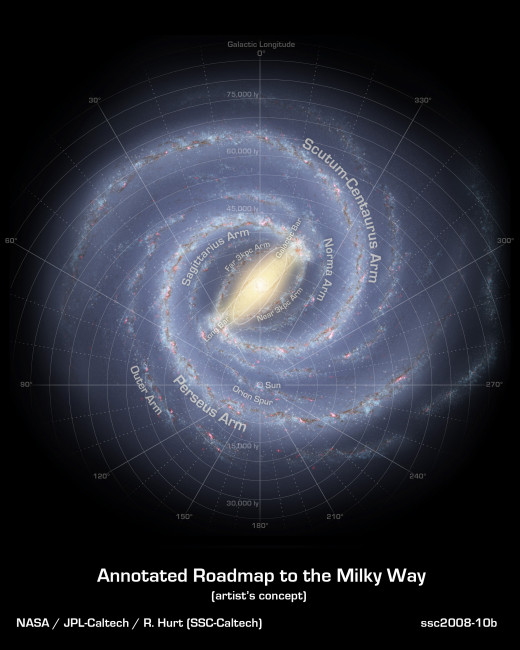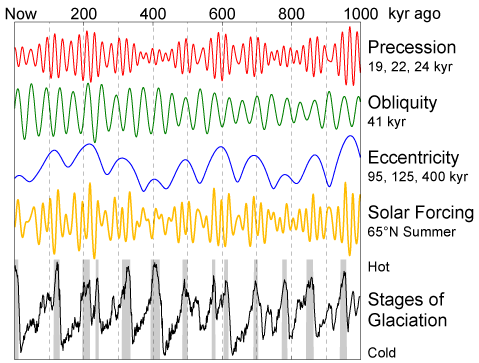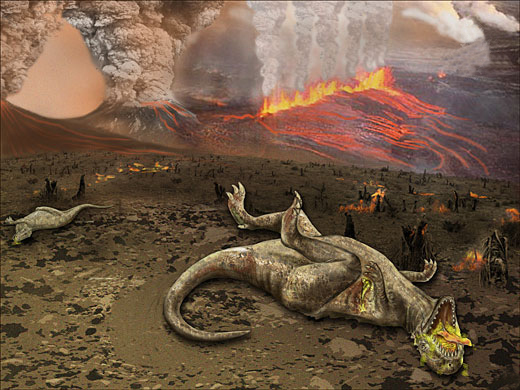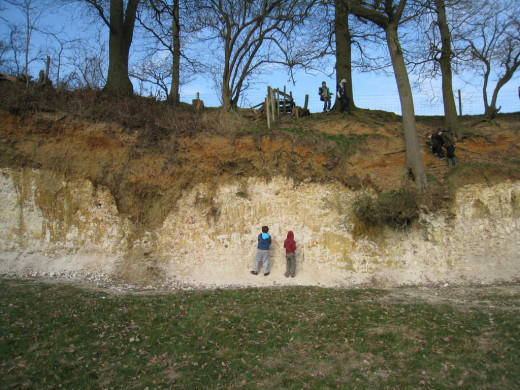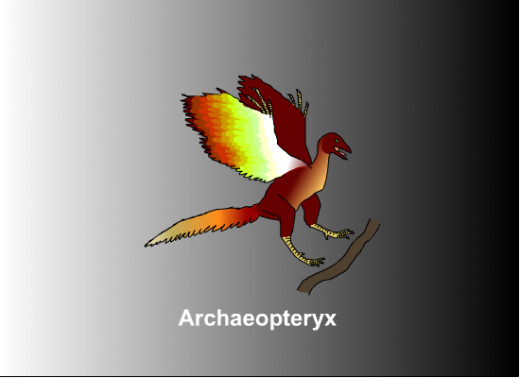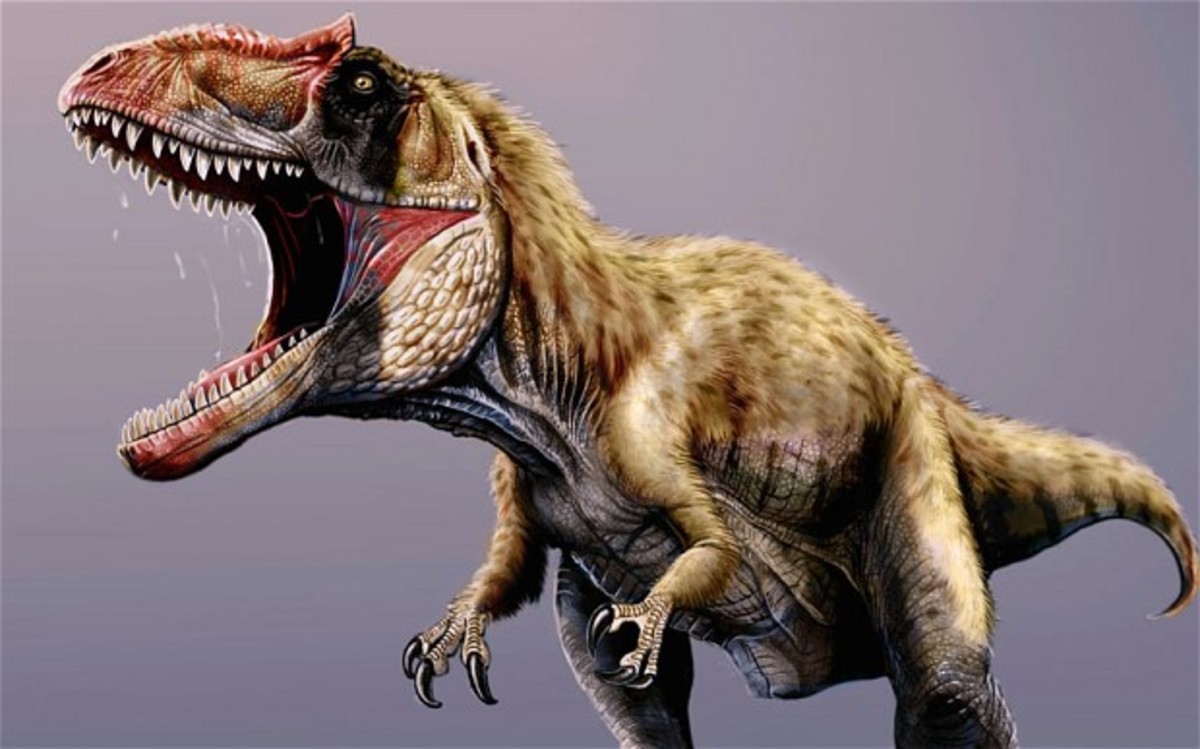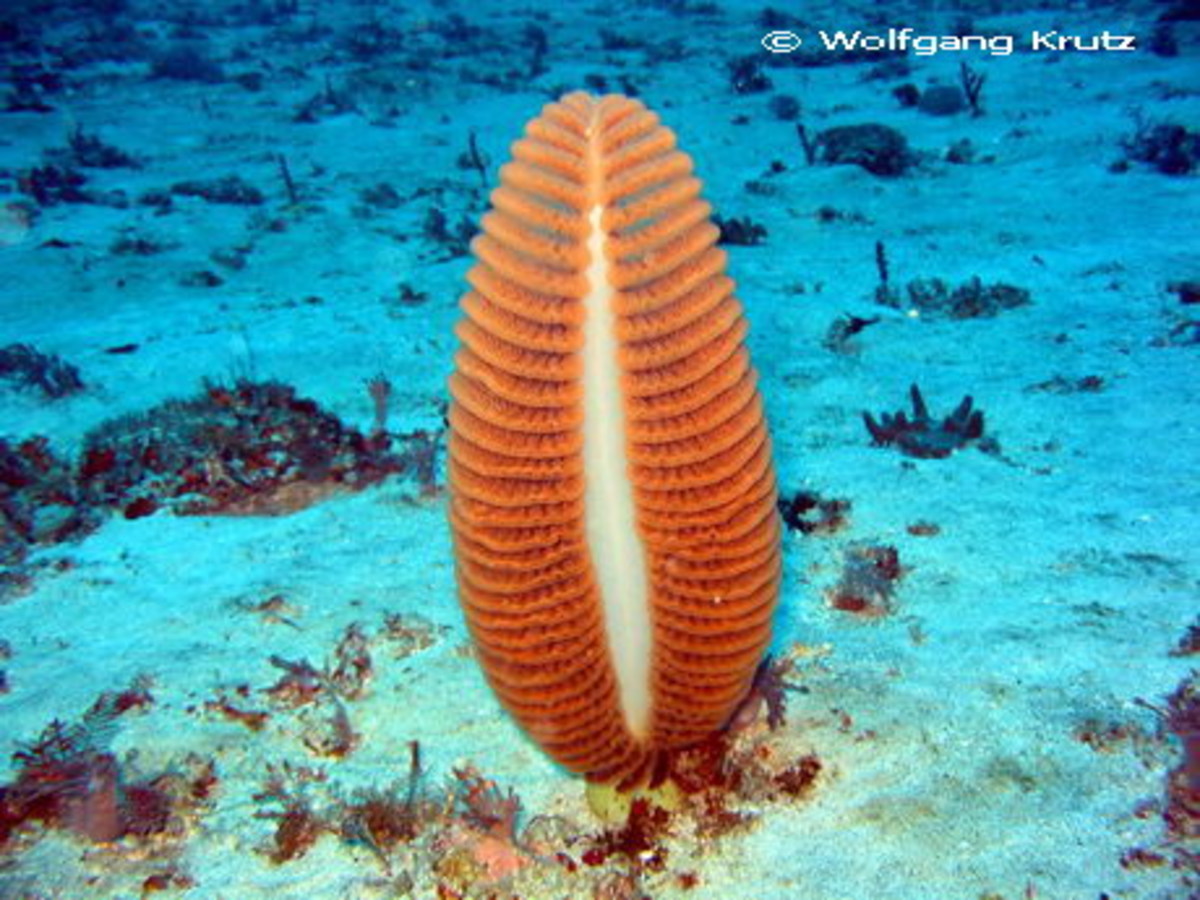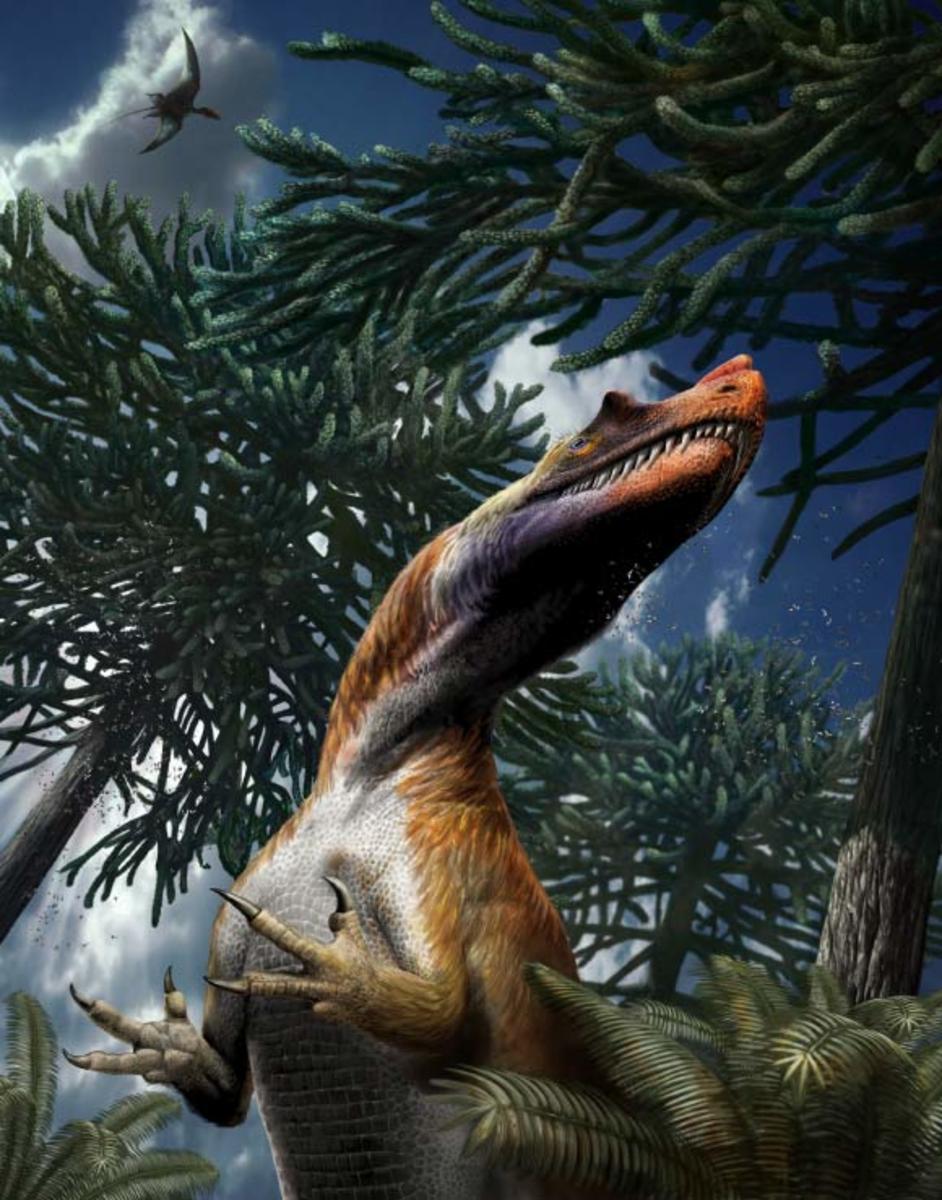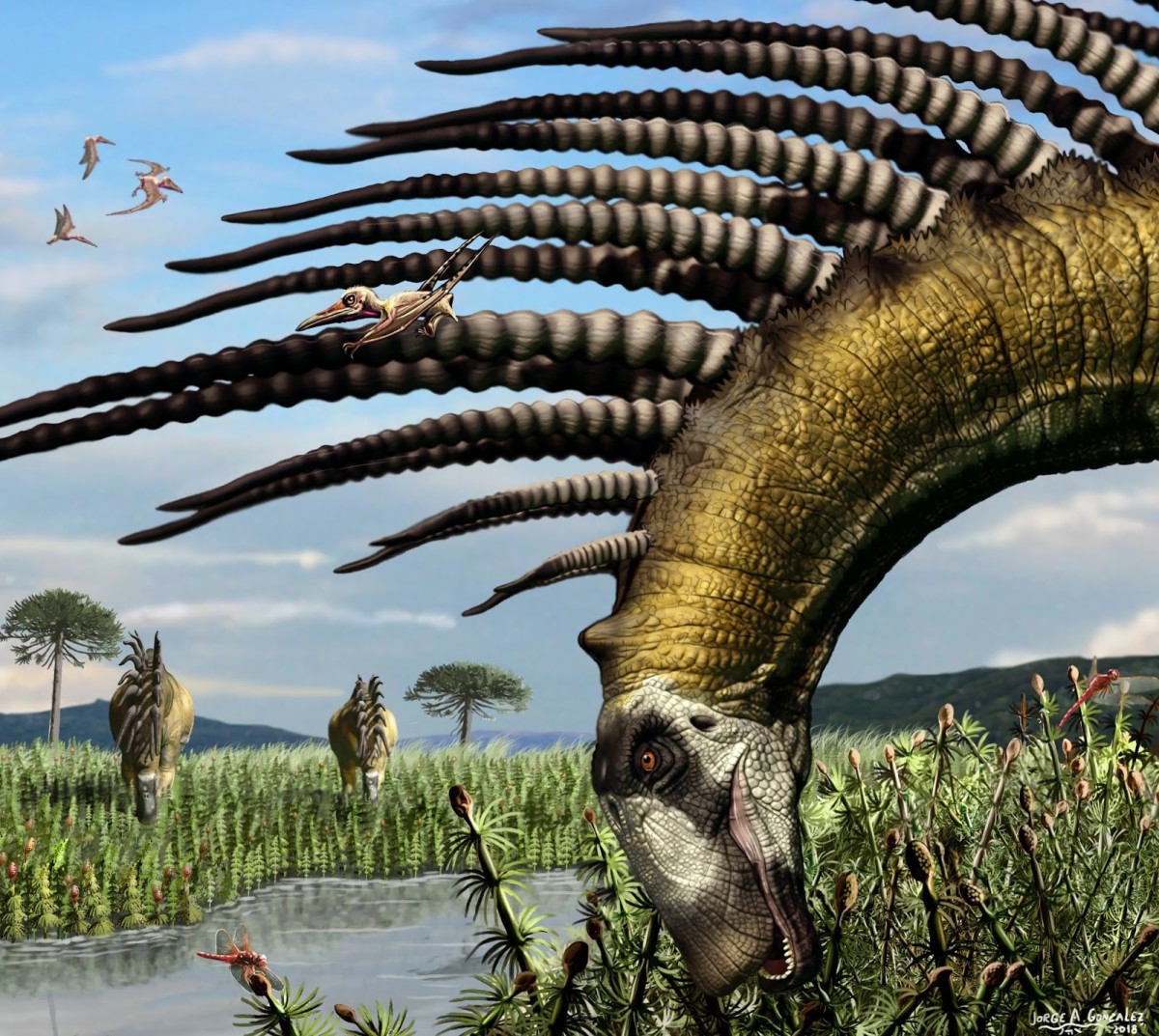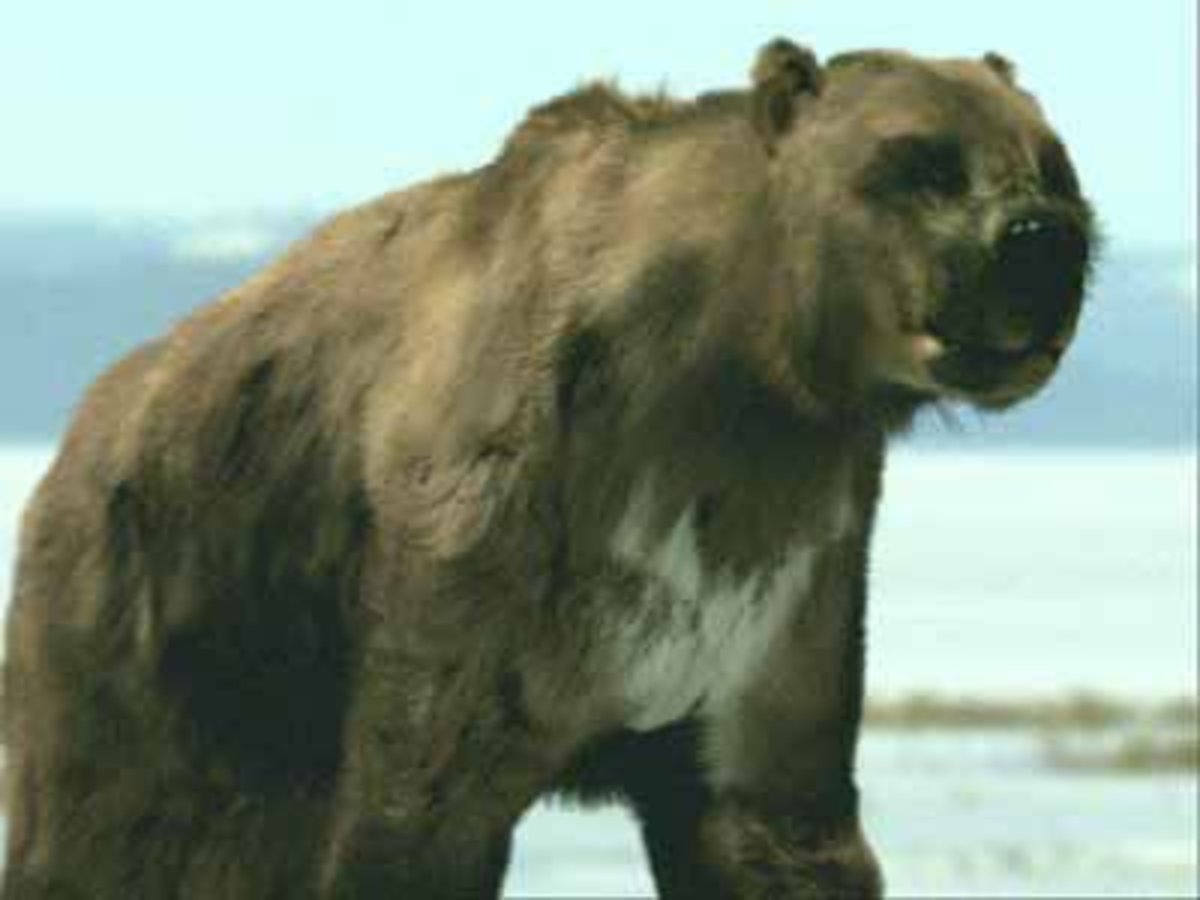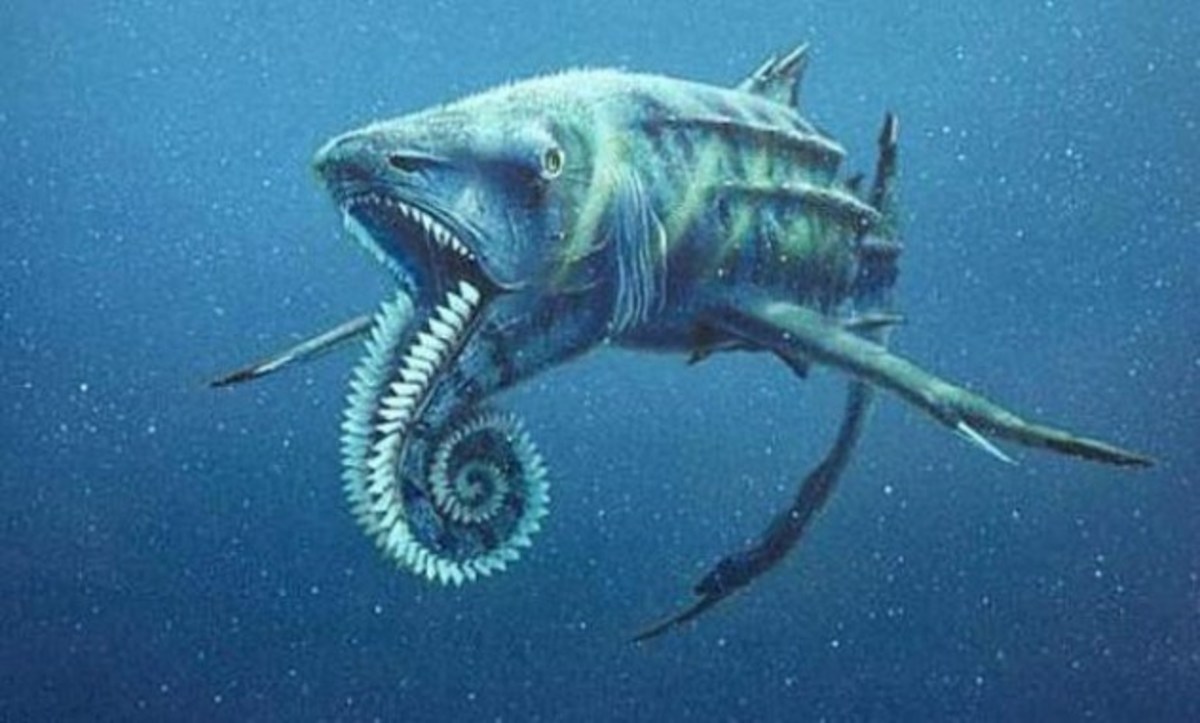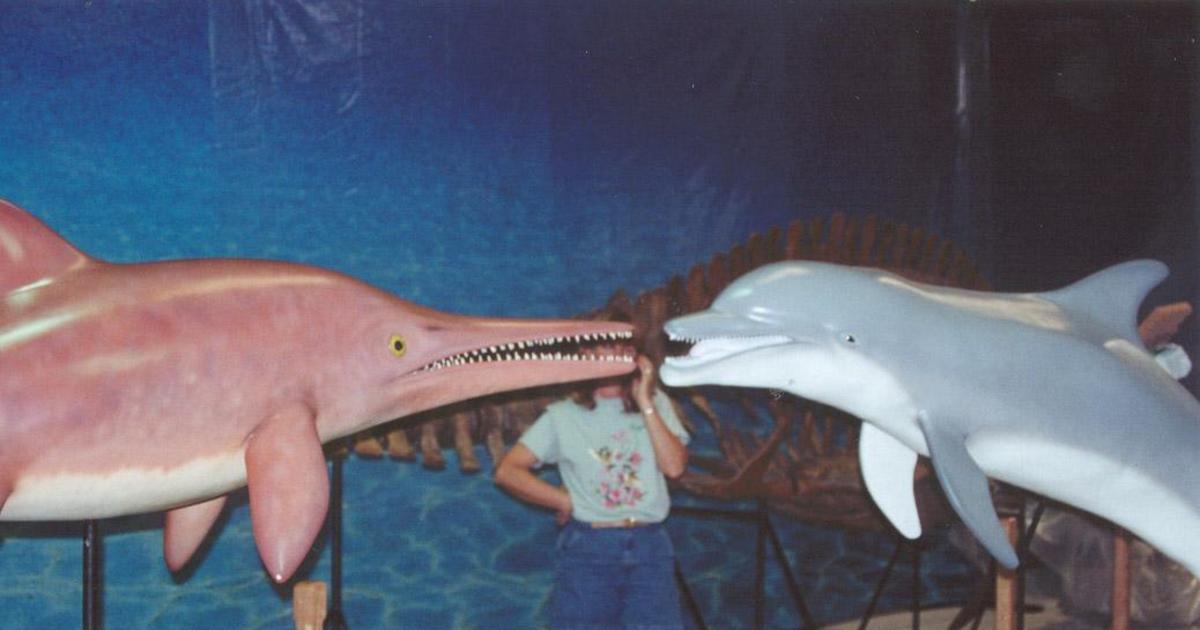- HubPages»
- Education and Science»
- Life Sciences»
- Paleontology»
- Prehistoric Life
Dinosaur Extinction Theories - Terrestrial and Extraterrestrial
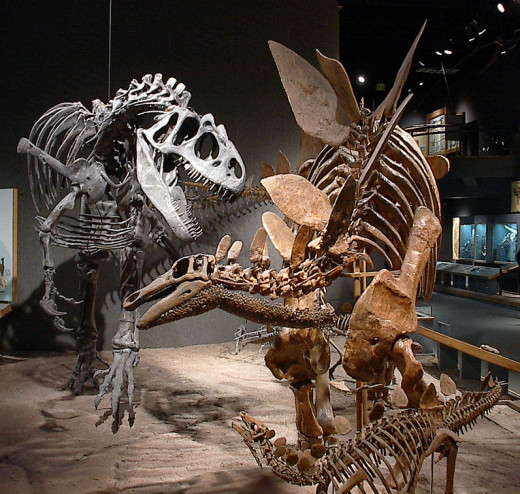
Dinosaurs ruled the earth for over 150 million years developing huge diversity in that time. From the very large to the very small, from herbivores, to scavengers to terrifying carnivores these creatures occupied almost every available niche. Many developed interesting adaptive features such as bony crests and spiked tails. Although the biodiversity of some groups was in decline long before the big mass extinction event, the group as a whole was still a major animal presence on every continent. Why the K-T extinction event resulted in the disappearance of a group successful for so long is still somewhat of a mystery although a number of interesting theories have been proposed and provide much fodder for palaeontologist research.

What all Theories Have in Common
All theories referring to dinosaur extinction share some common elements. There similar elements which are not disputed in terms of factors contributing to the demise of this long-reigning group of animals.
1. A global climate change did occur from the Mesozoic Era (251 to 65.5 mya) to the Cenozoic (65.5 mya to today).
- The Mesozoic Era experienced a consistent mild, warm climate while the Cenozoic Era became cooler and less consistent.
- There were major changes in the sea level at this time.
- What caused this climate change is debated amongst scientists.
- How fast the change occurred is also debated by scientists.
2. There were fewer short term consequences at the end of the Cretaceous Period from whatever factor or factors caused the extinction.
- Soot was thrown into the air;
- Short term acid rain was a catastrophic effect.
- The release of poisonous gases would have drastically affected all life forms.
- Cooling similar to a nuclear winter would also have had catastrophic consequences.
3. In some groups of dinosaurs, at least in North America, long term declines in biodiversity were being experienced millions of years before the final extinction event.
4. All theorists agree that a major global extinction event occurred.
- Huge numbers of marine and terrestrial species both vertebrate and invertebrate went extinct.
- Most organisms such as insects, mammals, birds, flowering plants, fishes, corals and molluscs survived and diversified after the Cretaceous.
- The casualties of the K-T extinction included some of the largest animals as well as the smallest creatures, primarily sea plankton responsible for most of the primary production in the ocean.
- The reason behind the extinction, it is agreed, was probably due to a long-term climate change initiated by the short-term changes.
5. Near or at the K-T boundary ( Cretaceous-Tertiary boundary) in many places around the world, there is a thin layer of clay containing high levels of iridium.
- Iridium is element 77 of the periodic table.
- It is found in high quantities in meteroites compared to the average abundance in the earth's crust.


Theories Suggesting an Extraterrestrial and Sudden Event caused the Extinction of the Dinosaurs
1. The Alvarez Hypothesis
- In the late 1970s geologist Walter Alvarez and his father physicist Louis Alvarez, identified an clay layer at the K-T boundary in Italy which contained high levels of iridium, rare on earth but known to be in high concentration in meteorites. They formed the hypothesis that a huge meteor impacted the earth causing the mass extinction which occurred at this time.
- This is the original hypothesis involving an extraterrestrial object slamming into the earth, large enough and with enough force that it caused a cloud of dust and soot to block out the sun for long enough to cause climatic change.
- Evidence was discovered that supported a large meteor impact including the discovery of iridium, a rare metal found in much higher quantities in meteors.
- A probable sight of a large meteor crater was found at Chicxulub, on the Yucatan Peninsula of Mexico.
- Shocked quartz resulting from powerful shock waves was discovered in the rocks of the K-T boundary as were glassy spheres resembling impact ejecta (molten rock solidified into droplets when cooled).
2. Multiple Meteor Impact Hypothesis
- To make the Alvarez hypothesis fit more neatly into the growing accumulation of new evidence, it has been suggested that a number of meteor impacts occurred over many years contributing to a mass extinction.
- There is support for the multiple meteor strike hypothesis.
- There seems to be a periodicity in mass extinctions as they appear to occur every 26 million years which coincidentally parallels the crossing of our solar system's path by the Oort cloud of comets.
- This crossing would probably cause a rain of comets on the earth for at least a few million years.
"As the sun orbits around the center of the Milky Way, it bobs up and down relative to the plane of the galactic disk. Every 64 million years, our solar system pops above the "northern" edge of the disk, exposing Earth to a barrage of dangerous cosmic rays that may be affecting biodiversity on the planet."
CREDIT: Mikhail Medvedev, courtesy of Dimitra Atri¹


3. Periodic Astronomical Origins Theory
- In the 1920s, Milan Milankovitch proposed the theory that glacial-interglacial cycles were caused by three variations in the Earth's orbit.
- Over a 100,000 year period, the eccentricity of the Earth's orbit varies between 1 and 5 percent resulting in small but significant changes in the sun's radiation.
- Over a 41,000 year period, the tilt of the Earth's axis changes by about 3 degrees again changing the sun's radiation, this time only in high latitudes by a more significant 15 percent.
- Precession of the equinoxes ( a slow and continuous changes in an astronomical body's rotational axis) has a period of approximately 22,000 years effecting the amount of radiation reaching the Earth's surface due to its impact on the northern and southern seasons. This precession appears to have initiated the ice ages and may have impacted climatic conditions at the time of the dinosaurs demise.
- A connection between the passage through our Galaxy's spiral arms and the four known warming and cooling periods in the last 500 million years of Earth's history was proposed by Israeli astrophysicist Nir Shaviv. Spiral arms produce about 10 times more cosmic rays than the space between them and this increase in cosmic ray activity initiates more low cloud formation, reflecting sunlight; thus, cooling the earth.
- The findings of Shaviv were confirmed by Canadian geologist Jan Veizer in 2000 using temperature records from fossil shells spanning the past 550 million years indicating a periodicity coinciding with the advent of past ice ages.


Which theory do you feel best explains the dinosaur extinction?
Theories Suggesting a Terrestrial Event Caused the Gradual Extinction of Dinosaurs
1. Volcanic Activity
- Evidence strongly suggests that volcanic activity was much greater at the end of the Cretaceous Period.
- Enough dust and soot from this activity over several million years could have blocked sunlight leading to drastic global climatic change.
- Huge volcanic eruptions in India at this time, known as the Deccan Traps, are visible at the K-T boundary and are rich in iridium as they probably originated from the Earth's mantle which itself is rich in iridium.
- New research, led by Gerta Keller of Princeton University in New Jersey, and Thierry Adatte of the University of Lausanne, Switzerland have gathered evidence suggesting that the Chicxulub impact predates the K-T boundary by as much as 300,000 years.
- They determined that about four to nine meters of sediments were deposited over a span of a few thousand years after the impact and evidence of mass extinction can be seen in sediments above this deposition level.
- Although proponents of the asteroid theory suggest that these sediments were deposited by tsunami activity resulting from the asteroid, Keller and Adatte disagree stating that sediments from a tsunami would have been deposited over hours or days not the thousands of years suggested by the evidence.
- These scientists also determined that species diversity was not impacted by the Chicxulub meteor.
- Of the 52 species found in sediments below the impact spherule layer, all were found in sediments above this impact layer suggesting that not one species went extinct due to the meteor impact in Mexico.
But would these changes have been enough to kill all the world’s dinosaurs? Although still unproven, it’s possible that a domino effect, leading to temperature increases, ozone layer reduction and lethal radiation, could have sent dinosaur populations into a nosedive over a relatively short period of time.
2. Plate Tectonics
- The end of the Cretaceous saw a lot of changes in the continental plates. Continental drift was occurring.
- Separation of Laurasia and Gondwandland into 12 or more separate landmasses was completed during this time frame.
- The oceans in general were receding from the land resulting in a major drop in sea level, an increase in land area equivalent to a land mass the size of Africa and many changes in both marine and land habitats including a harsher climate.
- This theory does help explain why some species died out, including shallow water sharks, large dinosaurs and marsupials while others thrived including turtles, salamanders, frogs and crocodiles.
- Shifts in the earth's plates would have taken a long time resulting in gradual climate changes and as large scale drift also occurred in the Mesozoic Period without mass extinction associated with this drift, it is a weak theory on its own.
Both of these theories must, however, be looked at together since with dramatic continental drift events, increased volcanic activity is always seen. This cause and effect relationship suggests that if dinosaur extinction was caused by an earthly event then both of these processes would have shared blame.
In addition, he says, mass extinctions such as the one at the K-T boundary appear to require multiple causes. "You really need a bad combination, like volcanism, climate change, and sea level fluctuations to have a major impact," he said.
-----→Thierry Adatte of the University of Neuchatel in Switzerland²


Did Dinosaurs Truly Become Extinct?
As the evidence mounts, the debate on the cause of the dinosaur extinction still rages. It is becoming clearer, however, that not just one cause could be responsible for such a mass extinction. It is hypothesized that a number of factors led to the demise of the dinosaurs and many other species in the K-T extinction. Gradual climate change, resulting from the shifting earth plates which in itself led to massive volcanic activity, would have led to a gradual weakening of genetic diversity. Multiple meteor collisions would have finished a job started millennia before.
Non-avian dinosaurs did indeed disappear at the end of the Cretaceous Period. However, it is now widely believed that dinosaurs did remain on earth in a form. Most palaeontologists believe that birds evolved from theropod dinosaurs and remain as a tribute to the most successful group of organisms to have ever lived. They are still among us, these amazing dinosaurs, now with feathers and wings. They continue to be an adaptive and diverse group of animals living on our planet Earth.
Resources Used
Caldwell, Brady. UPPSALA Universitet. The K-T Event :A terrestrial or extraterrestrial cause for dinosaur extinction? August 22, 2007.
²Lovett, Richard A. National Geographic News. "Dinosaur Killer" Asteroid Only One Part of New Quadruple-Whammy Theory. October 30, 2006
Based on a National Science Foundation news release. Astrobiology Magazine. New Blow for Asteroid-Extinction Theory. April 28, 2009
Smith, Dave. Dino Buzz. What Killed the Dinosaurs: Extinction Theories. November 28, 1995
Smithsonsian National Museum of Natural History. Dinosaurs. Why Did They Go Extinct?: Alvarez Hypothesis: Origin and Evidence.
Viegas, Jennifer. Discovery News. Dinosaurs on Road to Extinction Before Asteroid Strike. May 1. 2012
¹Wall, Mike. Live Science. Earth Biodiversity May Trace to Bobbing Solar System Path. December 22, 2010.


